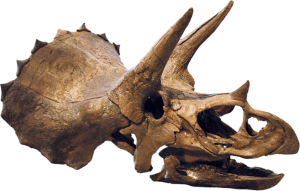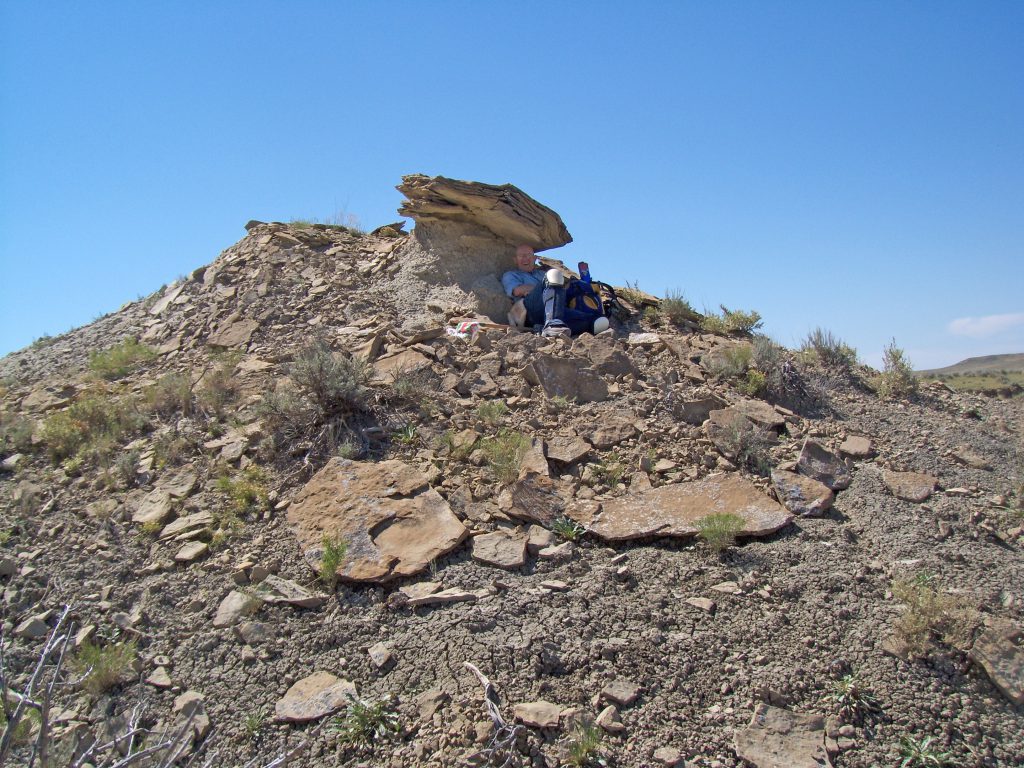I use two types of umbrellas in the field: one for mobile shade while I hike and the other larger unit to shade my dig site. For hiking shade, I purchased a large hand held umbrella that is at lease 58-62 inches wide when opened. I attach this to my backpack to provide complete shade when walking.
Mobile Shade
To make this I first buy an old style backpack with the aluminum frame. I need one that has hollow side frame tubes that extend about 4-6 inches above the highest cross bar. These tubes usually have a plastic stopper on the end, which I remove. This gives me a hollow tube section down to the first cross bar.
Next, I cut the handle from the umbrella just above the handle grip structure and below the thumb switch or actuator. I open the umbrella and insert the cut shaft end into the hollow end of the frame. It will bottom out as it stops on the internal cross bar. I drill a hole through both the frame tube and the umbrella shaft. I then lock the umbrella in place with a hitch pin or cotter pin. Without this pin the umbrella can pop out and take flight on a gusty day. I always carry spare pins, and yes, I have chased my umbrella down a ravine.
This set up is light-weight and offers complete mobile shade. I can bend over to the ground to dig with the backpack still on. More often, I take the backpack off with the umbrella expanded. If the wind permits, I set it down on the two bottom frame tubes and prop it upright with my walking stick. This provides small area shade for digging.



Mobile Shade
Site Shade
When I have a longer term dig site, I haul in the larger umbrella. This is standard beach umbrella 7 feet tall, about 7’ wide when expanded with a 1 1/2 inch two part tube shaft in the middle. To stabilize the unit I place the bottom of the shaft in a 5 gallon pail and filled with dirt and rocks for support. I learned that the first strong wind can pop the umbrella right out of the pail.
To keep it in place I drill holes through both sides of the pail near the bottom and also through the bottom of the umbrella tube shaft. Then I find a piece of heavy gage wire or rod that is heavier that a coat hanger and longer than the pail is wide. To erect the umbrella at the dig site, I run the rod through both the bottom of the pail, and the bottom of the shaft. The rod sticks out of the pail on both sides. Finally, I again fill the pail with the local rock or dirt. Then I raise the umbrella and insert the extension pin.
A really big gust can tip the rig over but the umbrella will stay in the pail. I just set it up again. I need to move the pail around often to get the maximum shade on my dig spot throughout the day. To work in heavy wind conditions, which are common on the prairie, I add support lines. I use standard tent stakes or 8-10 inch landscaping spike nails, braided rope and clamps. I attach the champs to the umbrella edges, run the lines out 10 feet, and drive in the stakes. I find that three lines have been sufficient for any wind… so far.



Umbrella Base
For larger sites the expandable 10′ x 10′ tent works well if you can get your vehicle close enough to the site. I am envious of those who arrive to a search area with an ATV on a trailer. They can go places fast and carry a lot of gear into a site and large fossil casts back out.
Some days you just get shade where ever you can.






